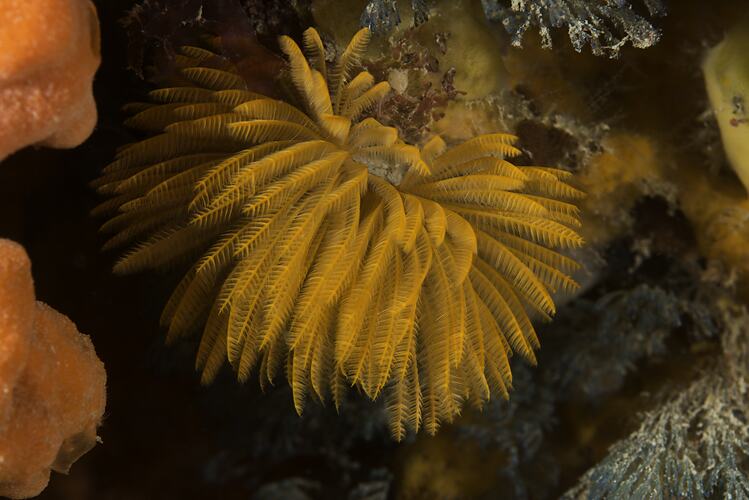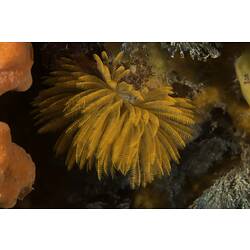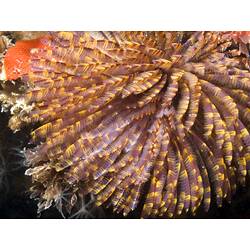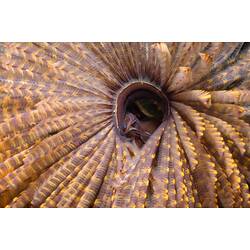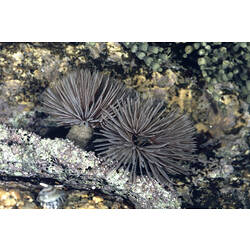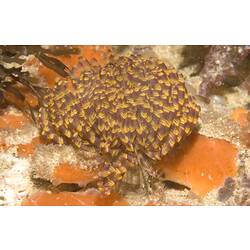General Description
Body covered by a brown-grey tube, sometimes covered by sand. Feeding tentacles extend out of the tube and appear as a tuft or fan. Tentacles colourful, often orange or purple. No flap (operculum) protects the opening. Usually solitary, or a couple of individuals. Tube up to 20 cm long.
Biology
These worms feed by filtering particles out of the water with their tentacles, which they wave to create currents. When disturbed they will rapidly withdraw their feeding crown within their tube. They attach to reef and artificial structures, including aquaculture farms. Due to their colourful crowns, they are often collected for the aquarium trade. Recent DNA studies have shown that what was considered one variably coloured species, Sabellastarte australiensis, occurring along the south-eastern and eastern coast of mainland Australia, may be at least three species. This work has also shown that features previously thought to be useful in distinguishing species actually vary within populations or change during development. This makes it difficult to distinguish the range of any individual species. Currently there are eight recognised species in the genus around the world, which are very hard to tell apart based on morphology or colour.
Distribution
Indo-Pacific, Caribbean. Australia.
Habitat
Reef areas, to depth of 200 m.
More Information
-
Animal Type
-
Animal SubType
-
Brief Id
Colourful, feathery feeding tentacles, often solitary.
-
Colours
Brown, Grey, Pink, Yellow
-
Habitats
-
Diet
Plankton or Particles
-
Endemicity
-
Commercial
Yes
-
Conservation Statuses
CITES: Not listed, FFG Threatened List: Not listed, EPBC Act 1999: Not listed, IUCN Red List: Not listed
-
Depths
Deep ( > 30 m)
-
Water Column Locations
On or near seafloor
-
Taxon Name
-
Scientific Author
Savigny, 1818
-
Common Name
Feather-duster Worm
-
Other Names
Fan Worm
-
Phylum
-
Class
-
Order
-
Family
-
Genus
